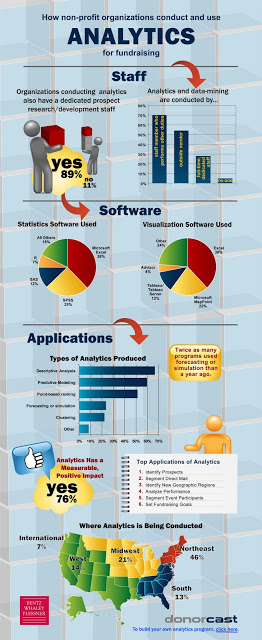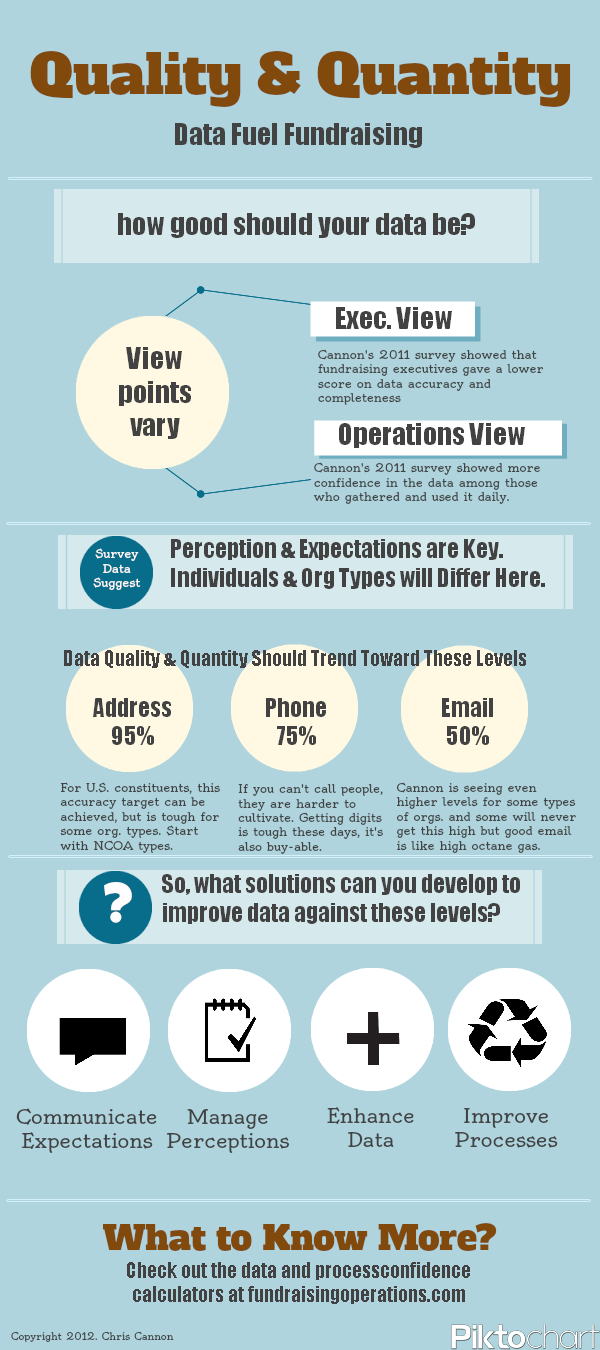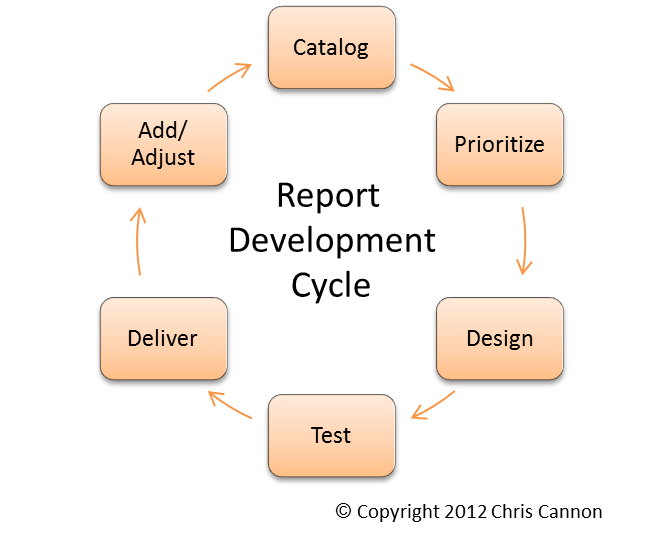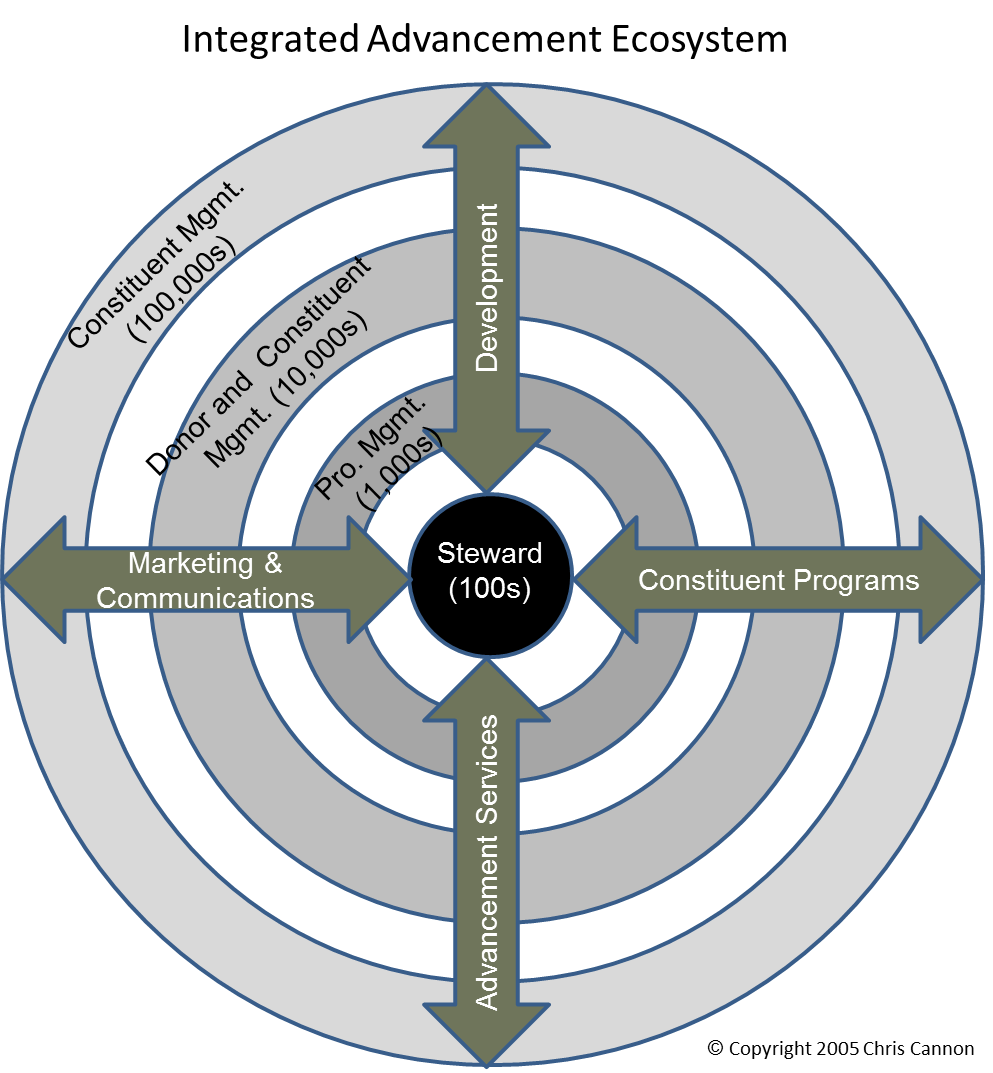It’s 2013…a lot transpired in recent months that may affect healthcare fundraising. New and different taxes. New and different healthcare provisions. New and (potentially) different court rulings. But, one this hasn’t changed: your organization must get serious about installing and leveraging an effective grateful patient program.
Great grateful patient and family programs have interrelated components–physicians and other care givers, admissions, development, and compliance folks are all in the mix. None of your internal sensitivities should be ignored, but none should be allowed to derail an effort to put a great, HIPAA-compliant process in place. We also know that some parts of a program matter more than others. In particular, physician referrals seem to make the most difference. A robust, end-to-end business process will cement the behaviors needed to capitalize on, or start to create, such referrals.
So, what does a great process look like? Much like great fundraising campaigns, details of the process will vary from organization to organization. I submit that a great process for some could be completely paper-driven and manual while others must be automated to be effective. All of them share key core process and technical components, though. The following diagram depicts each element that must be in place.
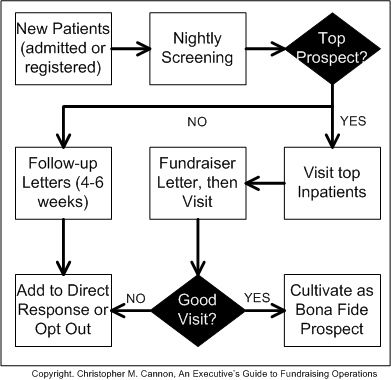
A few points about this process:
- Patients can include outpatient and clinic visits, but you might want to start with the smaller data set of in-patients.
- Nightly screening matters most when there is a subsequent daily review and triggers.
- In-patient visits are permissible, but a philanthropic culture must be in place first.
- If you don’t record and analyze the data and activity generated from the process, you are missing a big part of the process.
- It will take time to yield big results, but some of our clients processes leverage annual giving channels to provide immediate financial benefit, and identify potential major donors.
- There are dozens of other considerations not covered here but important to the process…so many issues, to be honest, that I joke this should be the subject of my next book.
Your team may not have the technical ability to build real-time data exchanges from the patient database to the screening company to your donor database. If API and SQL are foreign concepts, your process can still be rigorous and daily. However, automating visit ticklers, introduction letters, and other elements of the process, it is typically worth the effort. Ultimately, this business process should generate big-ticket leads while greatly expanding your solicitable constituency.
Remember that developing a business process here is the responsible thing to do. The law allows it and your organization’s competition may already be doing it. If you already have a process in place, could you make it even better? And, if you don’t have a process, now is the time to get going? Get the data, people, and processes in place and start delivering better and better prospects to support you fundraising efforts. Good luck and feel free to share any challenges or successes you’re experiencing.



